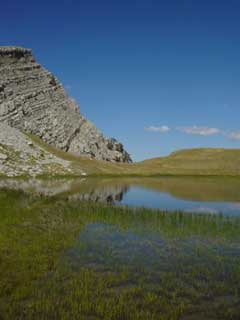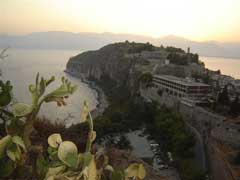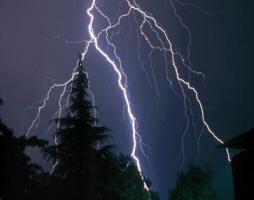 African water and equatorial space weather focus of inaugural Alcantara workshop
African water and equatorial space weather focus of inaugural Alcantara workshop
Researchers from three continents gathered at ESA’s technical heart in the Netherlands for the inaugural Alcantara initative workshop – fostering cooperation between research groups in Europe and those beyond, to jointly tackle key knowledge gaps in space research.
“Named for Spain’s ancient Roman bridge, Alcantara was initiated by ESA’s General Studies Programme in 2012 to foster links between leading academic institutions inside and outside Europe to study areas of mutual benefit,” explained Andres Galvez, head of ESA’s future-oriented GSP.
Alcantara partnerships take place within existing ESA programmes – two in the first phase. One is the Agency’s long-running TIGER initiative, supporting African countries in applying Earth observation technology to water management.
The second being ESA’s Monitor programme, seeking to understand how space weather in the vicinity of the equator – far stronger and less predictable than anywhere else in the world – affects satnav performance.
So Alcantara’s initial subjects of interest are found on opposing segments of the atmosphere – firstly, applying Earth observation to African water, and secondly, charting the ionosphere, the electrically active outer shell of Earth’s atmosphere.
However, as participants of the 20 February workshop, hosted at ESA’s ESTEC technical centre, talked together, these seemingly disparate fields turn out to have various factors in common.
Most of all, new opportunities are set to open in both: ESA’s Sentinel satellites – the first being launched in April – will soon make an unprecedented quality and quantity of Earth observation data products available to anyone with the technical skills to use them.
And the mid-decade completion of ESA’s Galileo satellite navigation constellation, along with Chinese and Indian systems joining the already operational US and Russian constellations, will enable a rain of satnav signals for precision applications, but specially disruptive space weather conditions will need to be compensated for before these benefits extend to equatorial regions.
Participants speak
Nick van de Giesen of the Delft University of Technology spoke on behalf of his partner, Frank Annor of Ghana’s Kwame Nkrumah University of Science and Technology, who had his boots in water, ‘ground-truthing’ the small reservoirs their team is studying across the West African Sahel.
“Nobody knows for sure how many of these locally-made and maintained reservoirs there are,” Dr van di Giesen commented. “But they are important to store water into the dry season in areas where there are no natural lakes. They are variously used for irrigation, household water, recreation and cattle.”
The team relied on optical imagery from multiple satellites during dry season, harnessing cloud-piercing radar imagery to fill in details during wet season.
The team are not just counting the mapping the reservoirs, but applying area to depth algorithms to estimate their volume over time, and by extent their evaporation rate.
“Often the assumption is that small reservoirs a few hectares in area are inefficient because of high evaporation, but we’ve made a robust estimate of a low evaporation rate, on the order of 2 mm per day. Next we’re trying to understand why that is.”
--
| Authors | Presentation title (click to access pdf) |
| Andrés Galvez (ESA) | Alcantara: a GSP initiative for international studies |
| Benjamin Koetz (ESA) | EOEP Alcantara TIGER studies |
|
Frank O. Annor (Ghana) & Nick van de Giesen, Olivier Hoes (TU Delft) |
Water reservoir mapping, Ghana |
|
Elijah K. Cheruiyot (Kenya), & Massimo Menenti, Ben Gorte (TU Delft) |
Monitoring of aquatic plants proliferation, Lake Victoria |
|
Nadia Akdim (Morocco), & Massimo Menenti, Silvia M. Alfieri (TU Delft) |
Definition of EO indicators for irrigation performance monitoring, Morocco |
|
Hanan Farag (Egypt), & Suhyb Salama, Christiaan van der Tol (ITC, U. Twente) |
Ecological Modelling in the Nile Delta, Egypt |
|
Jonathan Kampata (Zambia), & Tom Rientjes , Joris Timmermans (ITC, U. Twente) |
Integrated Water Resource Management in Zambia |
|
Joseph O. Mtamba (Tanzania), & Zoltán Vekerdy & Rogier van der Velde (ITC, U. Twente) |
Modelling River Hydrodynamic and Sediment Transport Processes in the Mara Wetlands, Tanzania |
| Roberto Prieto-Cerdeira (ESA) | Low-latitude ionosphere GNSS monitoring |
| Biagio Forte (Univ. of Bath) | MEDSTEC: Low-latitude ionosphere in Africa |
| Sandro Radicella (International Center of Theoretical Physics) | ICTP: Low-latitude ionosphere in Africa |
|
Gabriella Povero (Istituto Superiore Mario Boella) & Lucilla Alfonsi (Istituto Nazionale di Geofisica e Vulcanologia) |
GINESTRA: Low-latitude ionosphere in South-East Asia & MIMOSA: Low-latitude ionosphere in South America |
| Contact information | n/a |
|---|---|
| News type | Inbrief |
| File link |
http://www.esa.int/Our_Activities/Preparing_for_the_Future/GSP/Alcantara_Workshop_2014_-_Presentations_download |
| Source of information | ESA |
| Keyword(s) | earth observation, remote sensing, water management, floods, drought, |
| Subject(s) | AGRICULTURE , HYDRAULICS - HYDROLOGY , INFORMATION - COMPUTER SCIENCES , INFRASTRUCTURES , MEASUREMENTS AND INSTRUMENTATION , METHTODOLOGY - STATISTICS - DECISION AID , NATURAL MEDIUM , POLICY-WATER POLICY AND WATER MANAGEMENT , PREVENTION AND NUISANCES POLLUTION , RISKS AND CLIMATOLOGY , TOOL TERMS , WATER DEMAND , WATER QUALITY |
| Relation | http://www.tiger.esa.int/ |
| Geographical coverage | n/a |
| News date | 05/03/2014 |
| Working language(s) | ENGLISH |
 you are not logged in
you are not logged in





